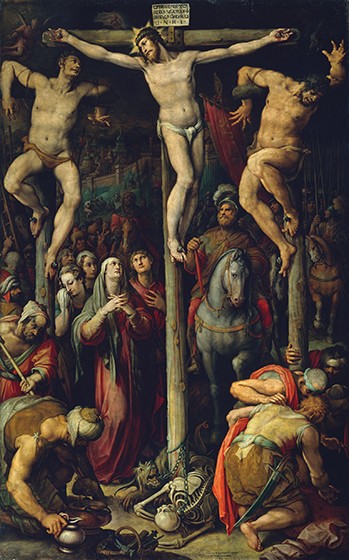Crucifixion, by Giovanni Stradano (1523–1605)

Giovanni Stradano, a Flemish artist who moved to Florence to study Italian art and culture, followed the style of Mannerism taught by Giorgio Vasari. The renovation of the Santissima Annunziata, which included Stradano’s altarpiece Crucifixion (1569), was part of a citywide project to modernize chapels and reemphasize the teaching of biblical stories through art. In this painting, Jesus turns away from the criminal on his left, who looks into the darkness in defeat and despair. Jesus turns to the repentant thief and says, “Truly I tell you, today you will be with me in Paradise” (Luke 23:43). The painting is rich with other symbolic elements. The skeleton at the foot of the cross represents Adam, who is redeemed by Christ’s death. The dog in chains represents Satan and the anti-God powers now defeated by Jesus’ sacrifice. Among the painting’s Mannerist features are elongated proportions, contorted body positions, and use of bright yellow and orange colors in the fabrics.





